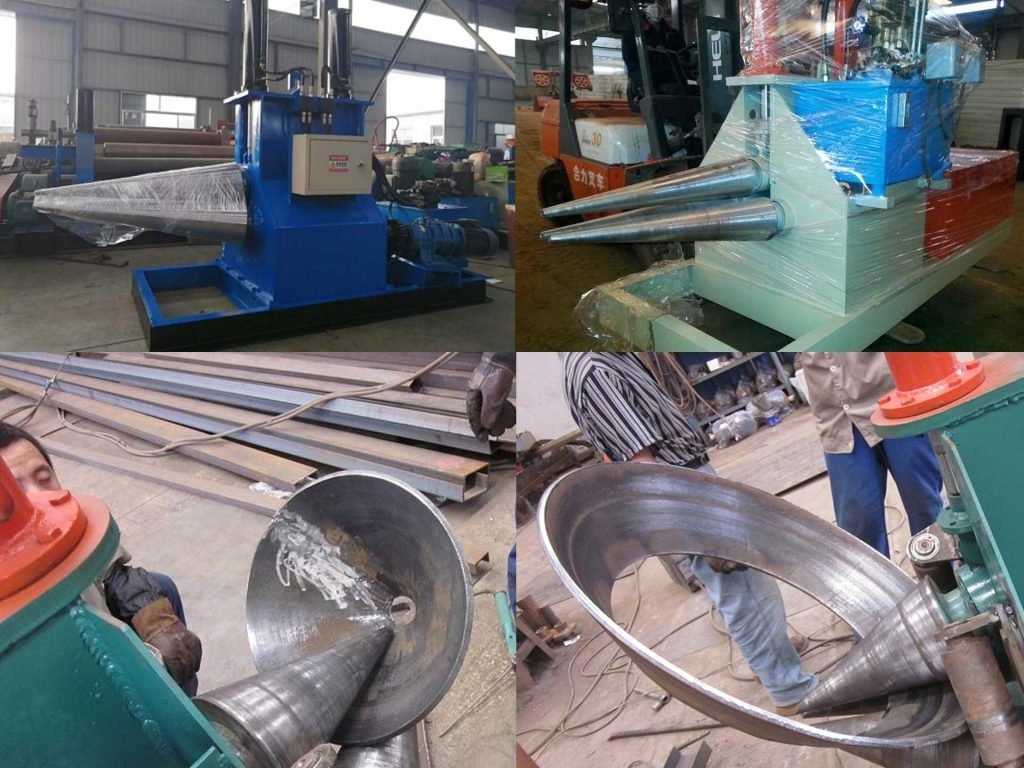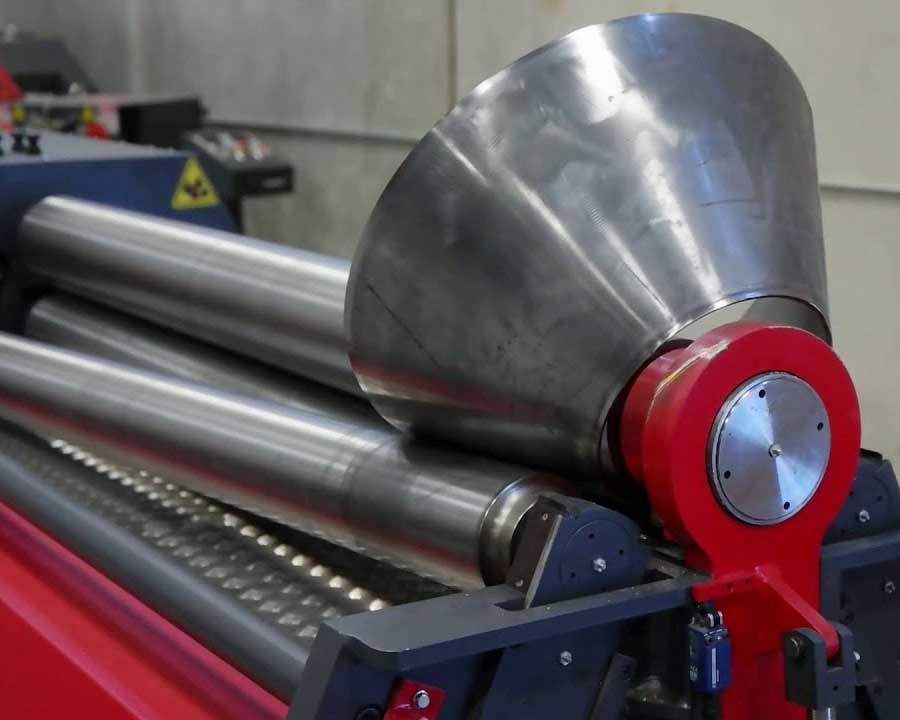Cylinders, arcs, and cones in a variety of sizes, thicknesses, and materials are some of the most commonly rolled components.
Edge Cracks
During a cold roll bending a metal cone with a cone rolling machine, the metal might show some cracks on the edges. This phenomenon occurs from secondary tensile stresses induced at the workpiece surfaces. These cracks result from factors such as uneven rolling.
How to Resolve Edge Cracking?
A trimming operation can remove edge cracks. Also, stretch and roller leveling under tension might work against edge cracks. Using edge rolls might help in achieving uniform rolls without any cracks.
Alligator Cracks
During roll bending a cone with a plate bending machine, layers of the metal stock might separate, leading to the opening of slabs resembling alligator cracks. The sheet metal adheres to the rolled surface and follows the path of respective rolls causing sheets to appear on in the plane.
Alligator cracking is majorly due to the non-homogeneous flow of materials across the sheet thickness. Greater spreading of materials occurs at the center of the material, thus metallurgical weakness.
How to Resolve Alligator Cracking?
Cambering of rolls is one of the most common solutions to alligator cracking. By applying the camber on rolls in the opposite direction, the surface in contact with the sheet becomes flat after a deflection.
Wavy Edges
One of the most common rolling defects in cone fabrication with a plat roller is the occurrence of fibers at the edge, which are longer than those at the center. This occurs when concave rolls bend leading to elastic deformations. Thickness at the center implies that the edges are more elongated.
How Can Prevent Wavy Edges?
The use of hydraulic jacks works well in instances where wavy edges occur. These jacks control the elastic deformation of rolls as per the requirements. Also, the use of small diameter rolls works efficiently.
6 specific measures for without cracks to roll bending a cone
In a plate rolling machine, the process of manufacturing a cone consists of only a few basic processes and procedures. We can practically remove the associated introduction regarding cracks later as long as the operation method is proper, but nothing is 100 percent certain, and there will undoubtedly be errors, so it doesn’t matter, master the treatment, and you can make up for it as much as possible.

- Limit the rate of deformation (i.e. extend the rolling time).
- The elements that can cause stress concentration on the blank surface are eliminated by using a three-roll plate rolling machine.
- When cutting, keep the binding direction in mind and strive to keep the fiber direction parallel to the bending line.
- On the machined end face of sheet materials with S≥50, it is preferable to have suitably rounded corners.
- Welding seams should be polished, and new materials’ cold bending qualities should be mastered.
- After gas cutting and other hot cycles, it is preferable to normalize the steel plate to remove the hardening layer on tempered steel and air-cooled quenching steel.
Works Cited
- “Metal Fabrication Resources by Blackstone Advanced Technologies”, Blackstone Advanced Technologies, LLC, Visited 12 Aug, https://blog.blackadvtech.com/common-rolling-defects-and-how-to-combat-them
- “Cone Rolling Machine”, Shots Blasting Machine, Visited 12 Aug, https://shotsblastingmachine.com/cone-rolling-machine/
